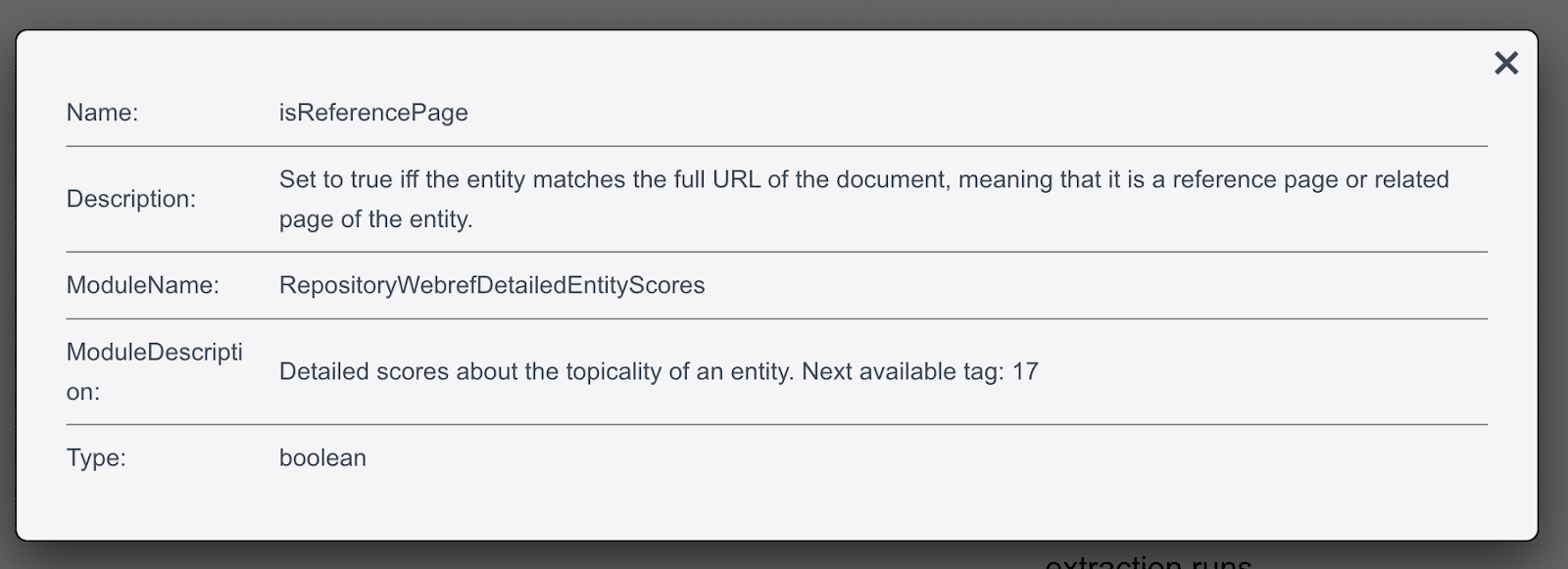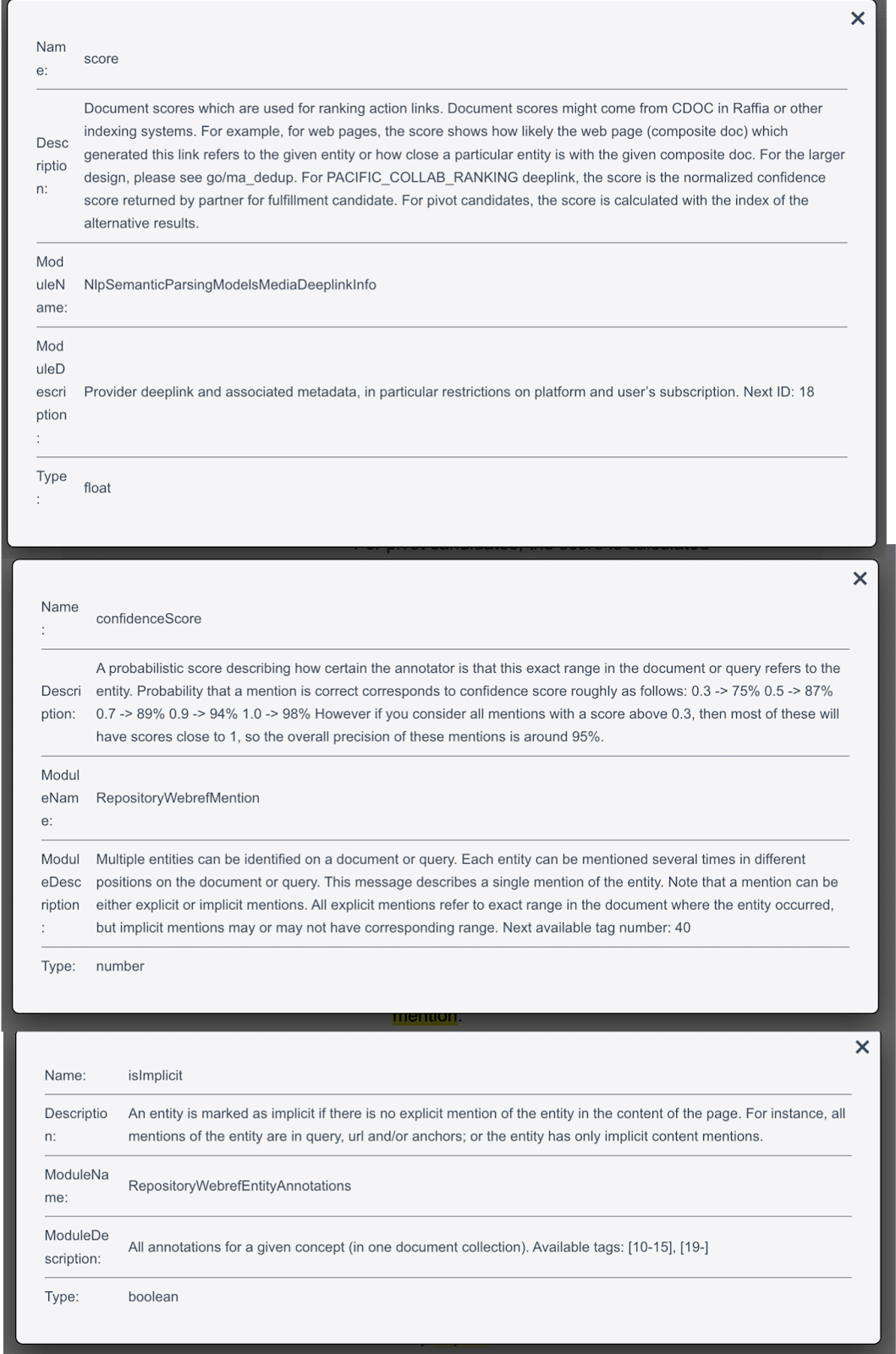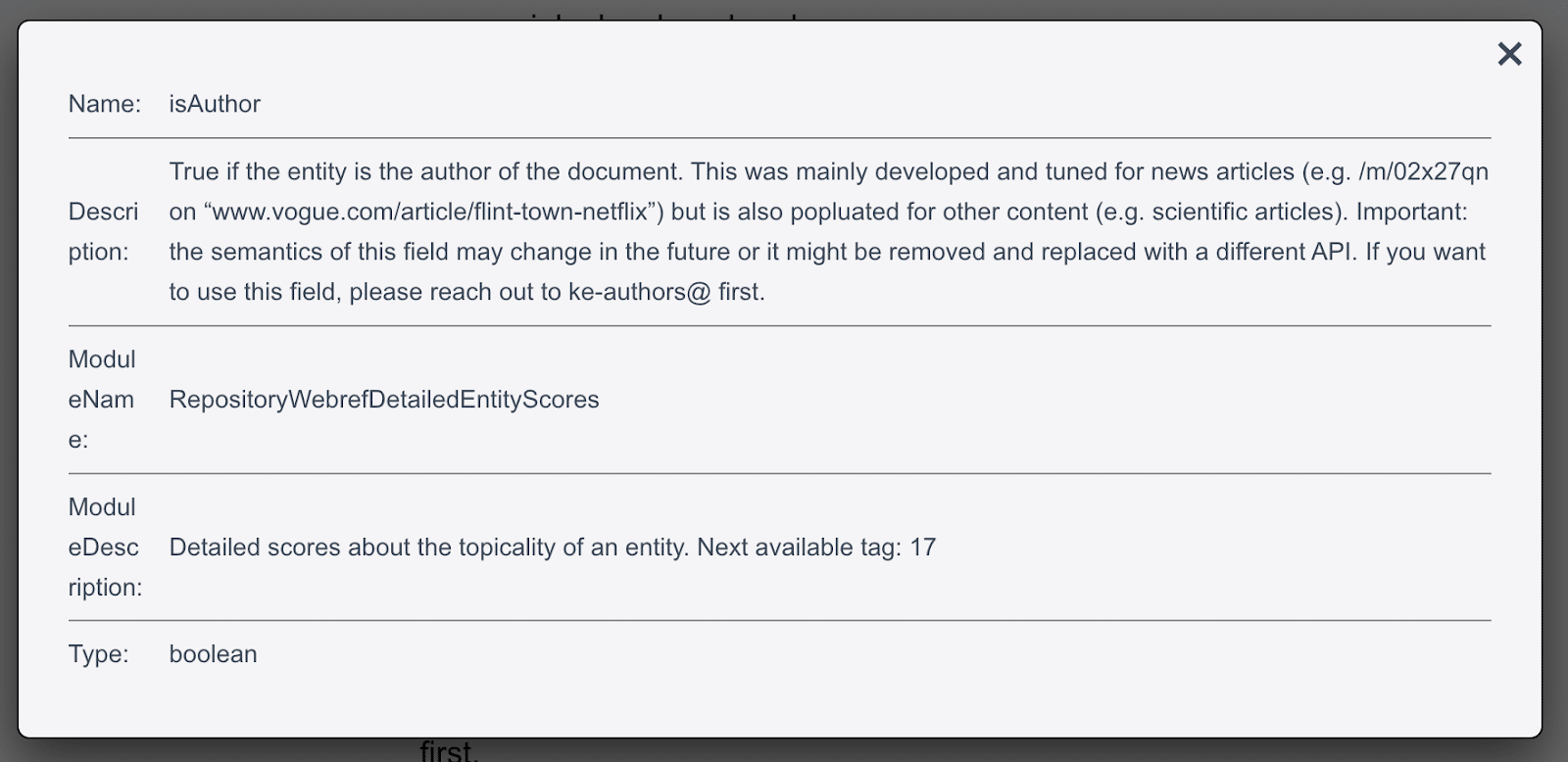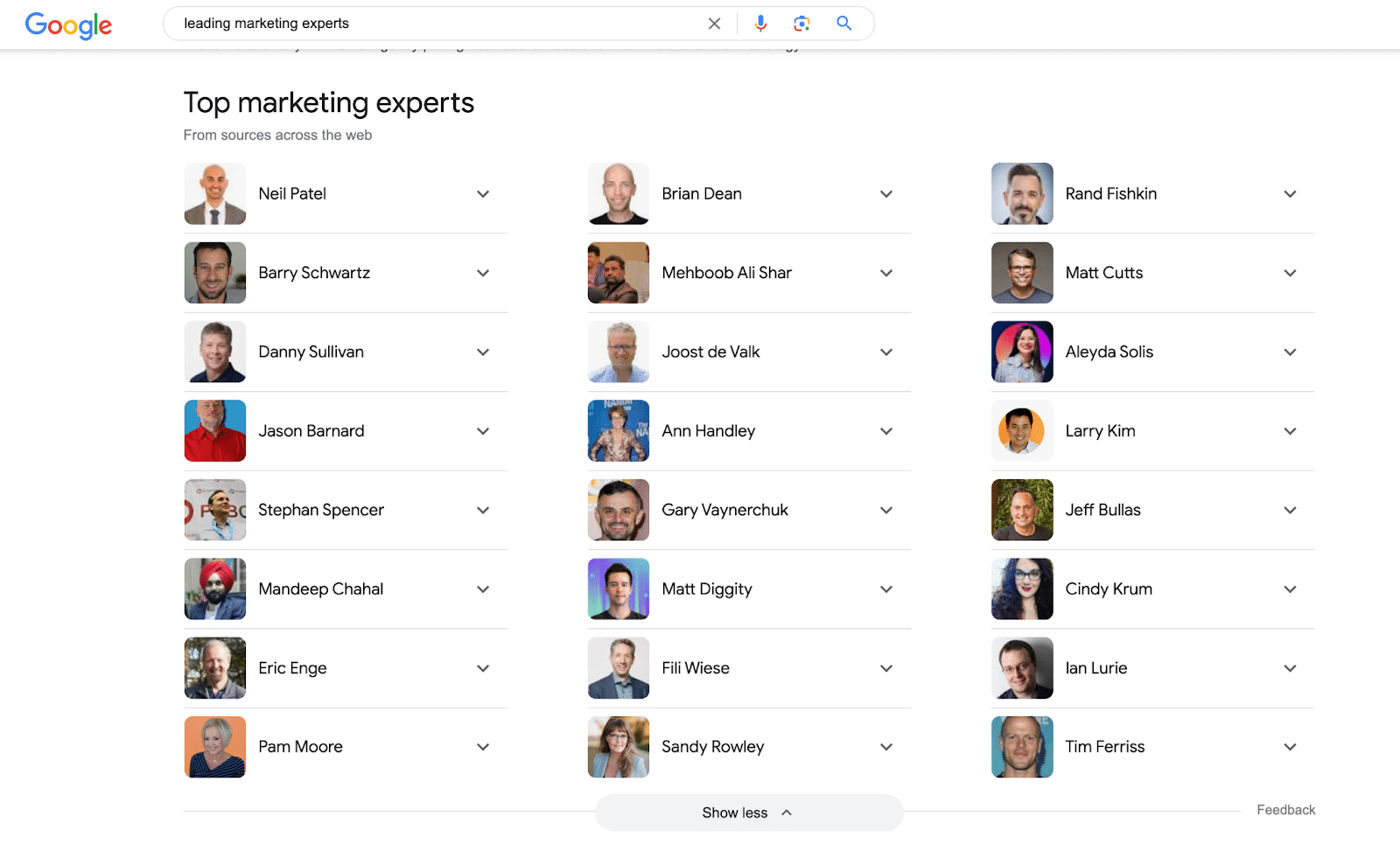How the Google leak confirms the significance of author and publisher entities in SEO

The May 2024 Google leak has shed light on the growing importance of author and publisher entities in SEO.
This article explains how the Google leak confirms that the search engine can identify content creators and website owners. It also shows why this is a great opportunity for SEOs to optimize author and publisher entities in their strategies.
Expanding SEO: Beyond websites to publishers and authorsFor over 30 years, SEO has focused on website and content-level optimization.
We can keep that. It is valuable and it works.
However, SEO needs to add two new layers of optimization:
- The website owner (publisher).
- The content creator (author).
This allows Google to assess each related entity and gives Google confidence in the brand, so it awards each entity a kgmid, and a place in Google’s Knowledge Graph – the cornerstone of search and generative AI.
Since 2015, I have optimized thousands of website entities, website owner entities and author entities to create Knowledge Panels and optimize brand SERPs (the search results for a brand name search).
Google identifies and assesses the credibility of the content, the entity behind the website and the content creators on the website.
How do I know? I have the data.
The Google leak does not list ranking factors or machine learning elements that drive Google Knowledge algorithms. Still, it reinforces what I see daily – that Google’s algorithms successfully detect and evaluate the credibility of website owners and content creators.
And this is an enormous opportunity for SEO.
A new three-tiered approach to SEO Tier 1: Optimizing website content with traditional SEOContinue to focus on website-level optimization – technical SEO, links and content. This will drive traffic to the website and convert visitors.
The two tiers below provide a holistic SEO strategy that will thrive and survive in generative AI results and contribute to the wider business digital marketing objective of acquiring clients and making sales.
Tier 2: Optimizing the website owner (publisher)Google leak: isPublisher
 The screenshots of the documents are thanks to Dixon Jones from InLinks, who provides a great resource for searching and displaying the documentation
The screenshots of the documents are thanks to Dixon Jones from InLinks, who provides a great resource for searching and displaying the documentation
The isPublisher element in the leak corresponds directly to the Search Quality Rater guidelines changes between December 2022 and September 2023.
Mentions of “website” were replaced by “website owner” (a.k.a. publisher). There are now 20 mentions of “website owner.”

This website owner entity is the “guarantor” of the content, standing firmly behind it. Who is putting their reputation on the line by publishing this? Is that entity trustworthy?
Note: The publisher will often be an organization (including a corporation, local business or educational organization), but it can also be a person. In this article, I am assuming a corporation.
The isPublisher variable is boolean, so the game is zero-sum. The algorithms understand who the publisher is, or they don’t. If they don’t, Google loses confidence in the website and content because it doesn’t understand who has their reputation on the line.
Optimizing for website owner/publisher entitiesStep 1 of tier 2: Understandability
Understandability is the foundation of website owner optimization. Without this, the rest won’t work. You absolutely cannot skip this step.
Educate Google’s knowledge algorithms so that they understand the entity that published the content: who they are, what they offer and who they serve.
Focus on the clarity, consistency and accuracy of all information on the entity home and company profiles, creating an infinite loop of self-corroboration. Google identifies isReferencePage for entities, which is similar to sameAs and subjectOf in schema markup.

Your KPI in step 1 is obtaining a kgmid in Google’s Knowledge Graphs for your website owner entity. Once you have a kgmid, you have started your entity optimization.
 A corporate entity in Google’s Knowledge Graph
A corporate entity in Google’s Knowledge Graph
But don’t stop there. Keep building confidence in Google’s understanding. Confidence is key.
Google is more likely to prioritize entities when it is confident it understands who they are, what they offer and which audience they serve.
Expand the footprint with references on relevant second and third-party websites to build confidence in understanding.
Google identifies reference pages from all across the web with the website owner entity through inbound links, explicit mentions and even implicit mentions, as these variables show.

Your KPIs for confidence in understanding will combine the items listed below.
- The confidence score in Google’s Knowledge Graph. (WordLift’s score of 197 in the screenshot above is solid.)
- The stability of a Knowledge Panel (when it 100% reliably triggers on a brand SERP).
- The entity home is displayed in the Knowledge Panel.
- The presence of related entities in the Knowledge Panel, such as a People Also Search For section.
Get the daily newsletter search marketers rely on.
Business email address Subscribe Processing...Step 2 of tier 2: Credibility
Google refers to credibility as E-E-A-T. At my company, we use an extended version: N-E-E-A-T-T (adding Notability and Transparency, both vital to entity optimization).
Demonstrating N-E-E-A-T-T credibility requires that you communicate the following things to Google.
- Notability: The company is a recognized market leader cited by multiple leading resources inside the industry (and, where possible, generalist resources such as major media sites, Wikipedia, etc).
- Experience: The company has visible, historical and recognized involvement in the topic.
- Expertise: The company provides topical content that aligns with generally industry-accepted facts across owned sites, social platforms and third-party sites. The content provides relevant solutions to common problems faced by the target audience.
- Authoritativeness: The company has mentions and links back to its Entity Home from multiple relevant authoritative websites. It has recent and historical relationships with market-leading companies and influential people in the industry.
- Trustworthiness: The company is regularly cited positively by leading industry resources and the target audience (clients and users) on forums and across the web.
- Transparency: The company provides clear, up-to-date and accurate information about itself and its products on its website and across the web. It interacts openly and clearly with users and clients web-wide.
Your work as an SEO is to use traditional SEO tactics to ensure that this information is discoverable for Google and provided in a format that Google can digest easily and analyze confidently.
Don’t focus only on the company’s website. You must look wider and work on second-party websites such as social media platforms, profile pages and review sites (see isReferencePage above).
Your KPIs for credibility will be a combination of the following things.
- The quality (information-richness) of a Knowledge Panel.
- The number, relevancy and confidence scores for related entities in the Knowledge Graph. WordLift has 345 entity associations in the example above (but be wary when too many are irrelevant).
- The quality and richness of the brand SERP.
- The quality and richness of SERPs for queries that include the company name.
Step 3 of tier 2: Deliverability
Deliverability is not directly the responsibility of SEO, but a marketing, funnel and acquisition strategy.
It ensures your content is strategically placed across the right online platforms to reach your target audience. Having the right content on the right platforms for the right audience across the entire market digital ecosystem.
Ideally, the company achieves omnipresence for its ideal client and shows up everywhere when looking for solutions to their problems.
SEO is essential in supporting work by “packaging” this content for Google to understand.
Your KPIs for deliverability will be a combination of the following things.
- Brand search volume.
- Brand SERP click-through rate.
- Positive sentiment and accuracy of assistive engine descriptions (ChatGPT, Bing Copilot, Google Gemini, etc.)
- A presence in the top and middle of the funnel results.
- Proto-measurements in search and assistive AI results.
Dig deeper: Modern SEO: Packaging your brand and marketing for Google
Tier 3: Optimizing the content creator (author)Google leak: isAuthor

Like isPublisher, isAuthor corresponds directly to the Search Quality Rater Guidelines changes between December 2022 and September 2023 when mentions of content creator (author) escalated. The guidelines mention content creator 140 times.

The content creator entity is responsible for the information in the content and stands behind it. Google wants to know who is creating the content and whether they are trustworthy.
The isAuthor variable is boolean, so the game is zero-sum. The algorithms understand who the content creator is. Or they don’t. If they don’t, you aren’t even in the game for tier 3.
Optimizing for content creator/author entitiesThe three-step process for a website owner/publisher I described above works similarly for a personal entity and personal brand strategy, so I won’t repeat everything here; I’ll just identify different aspects.
Step 1 of tier 3: Understandability
Google’s knowledge algorithms have been focusing almost exclusively on person entities since the first Killer Whale Update in July 2023, so getting a place in the Knowledge Graph and triggering a Knowledge Panel is significantly easier for a person than a company.
The process is the same. Create an infinite loop of self-corroboration.
- Identify an entity home.
- Make all references to the person clear, accurate and consistent across the web.
- Link from the entity home to the corroborative source and back to the entity home.
Your KPIs for confidence in understanding will be the same as for the website owner/publisher/corporation entity.
Step 2 of tier 2: Credibility
You need to be transparent to demonstrate to the algorithms that the content creator is an expert, has experience and is authoritative and trustworthy.
If you want to be at the top of the results, you must make that entity notable in its field. This is niche notability. Trusted and famous in a niche beats trusted every day of the week.
That is how you can get an author or person entity to the top of an entity list like this:

Your KPIs for confidence in credibility will be the same as for the website owner/corporation entity.
Step 3 of tier 2: Deliverability
Optimizing an author entity or a personal brand means maintaining a consistent presence wherever the audience may be online. The message and content are distributed across the digital landscape to engage with the target audience.
By aligning their content with the platforms the author or person’s ideal audience naturally uses, the person shows up at every stage of their online journey, offering insights, solutions, or services related to their interests and needs.
Deliverability is not SEO’s direct remit. SEO leverages maximum value from digital content assets wherever they appear online by ensuring they are discoverable, digestible and attractive to Google.
Your KPIs for deliverability will be the same as for the website owner/corporation entity.
Incorporating author and publisher entity optimization into your SEO strategyThe May 2024 Google leak is a definitive signal for SEOs and business leaders to embrace an expanded approach to optimization.
By recognizing the importance of entities – specifically authors and publishers – you must adapt your strategies to align with Google’s evolving ability to understand the world and evaluate the credibility and authority of the players.
The traditional focus on website and content optimization remains the essential foundation, but adding entity optimization at both the publisher and author levels is vital.
The three-tiered entity optimization strategy – encompassing understanding, credibility and deliverability – ensures that you are not just optimizing for search engines but establishing a clear identity for all related entities within the relevant market’s digital ecosystem.
As you progress with your SEO efforts, remember that it’s no longer just about climbing SERP rankings; it’s about building trust with users and search engines through insightful entity optimization.
This holistic approach will future-proof your SEO and provide greater visibility, user engagement, and, ultimately, sales and revenue for your company or clients.
